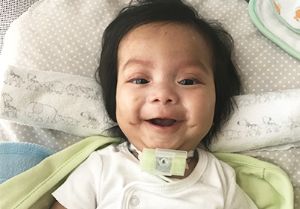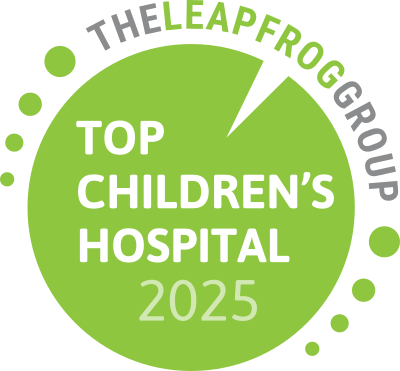Case Study: Mia Lorino
Although Mary Lorino, Mia’s mom, is a pediatric nurse, she had never heard of infantile spasms.
“After doing research into infantile spasms, I was completely surprised by the severity of what we could be dealing with,” said Mary. “My gut instinct was that something wasn’t right with Mia, and I needed to advocate to get the care she needed.”
The Lorinos had noticed that Mia, then 10 months old, was making an unusual upward gaze. Thanks to an internet search, Mia's mom Mary found a video of a child with the same eye movements – and a diagnosis of infantile spasms. Her research showed that infantile spasms was a medical emergency, and she needed to act quickly to prevent damage to Mia’s brain.
Fortunately, Mary called Epilepsy Coordinator Karen Butler, RN, BSN, to get an appointment for Mia to be seen by Le Bonheur’s epileptologists the following day. At the clinic, she was taken back for an EEG immediately.
“It was quickly apparent that Mia’s EEG was abnormal,” said Epileptologist Sarah Weatherspoon, MD. “Mia was admitted to the hospital for a 24-hour EEG plus an MRI and other testing to determine the cause of her unusual movements.”
After a series of tests, it was confirmed – Mia had infantile spasms. Fortunately for Mia, it was only three days from the onset of her first spasms to treatment, lowering her risk of permanent brain damage. She immediately started ACTH and vigabatrin. Her spasms dissipated within a week of their onset, and she was off medication after a few months.

“Because of early intervention, Mia had no serious regressions and no pause in her development,” said Weatherspoon. “Her success shows the crucial need for pediatricians to be able to recognize potential cases of infantile spasms as a medical emergency and the importance of quickly referring children to a center than can offer the best treatment options.”
Currently, Mia is 21 months old, medication-free and enjoys exploring the world around her. While she has mild delays in speech and gross motor skills, she is quickly closing that gap thanks to early intervention speech and physical therapies.
“Thanks to Le Bonheur we were able to get a fast diagnosis for Mia,” said Mary. “The staff was attentive to all of our fears, and we hope that Mia’s story can help primary care doctors learn to recognize the first signs of infantile spasms to help other children have better outcomes.”
Help us provide the best care for kids.
Le Bonheur Children's Hospital depends on the generosity of friends like you to help us serve 250,000 children each year, regardless of their family’s ability to pay. Every gift helps us improve the lives of children.
Donate Now













